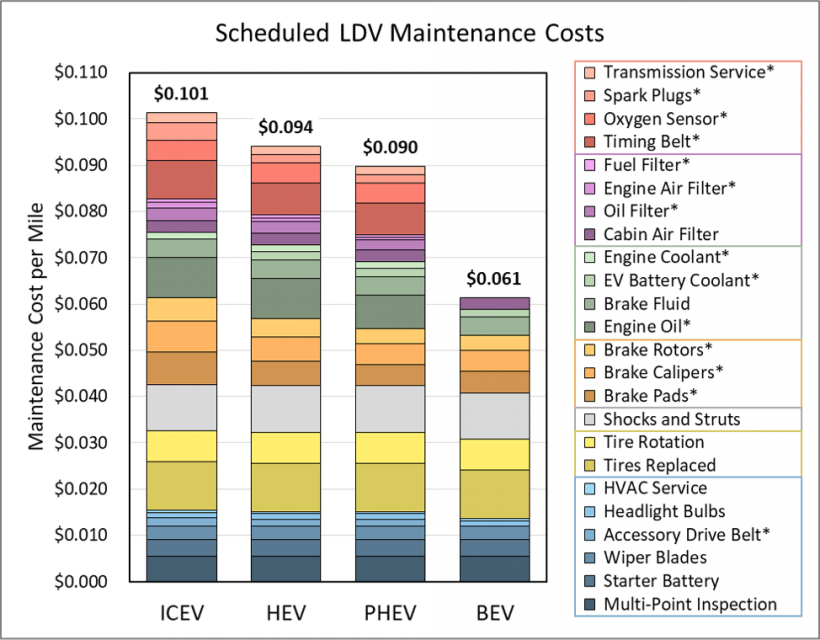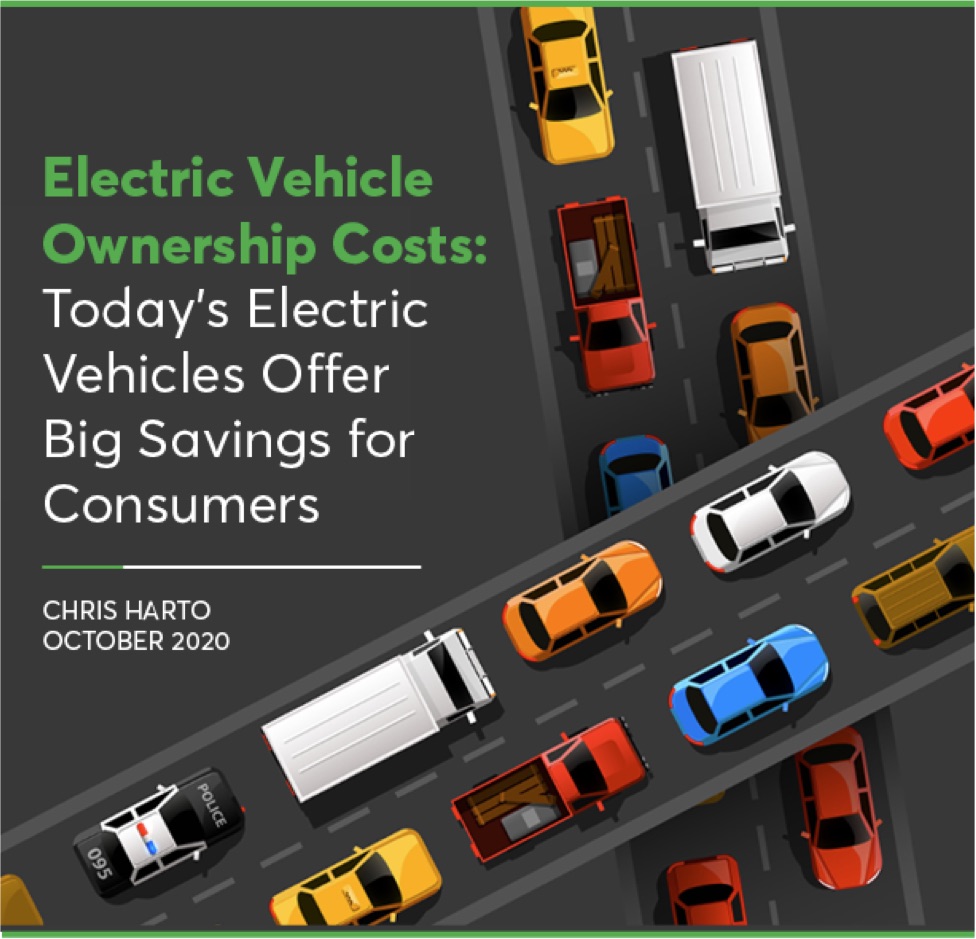Electric motors do not require any regular maintenance, so switching from a gas guzzler to an EV offers significant savings in service. The average EV driver saves $4,600 in lifetime maintenance and repair.
For all-electric vehicles, gone is the need for oil changes and inspection of spark plugs, timing belts, or any of the other hundreds of moving parts of an internal combustion engine. Individually, each oil change might only cost $50 and take an hour, but in the aggregate, the time and money it takes to maintain a combustion engine vehicle adds up.
EVs are still vulnerable to physical problems like uneven tire wear or jammed air filters in the HVAC system. But the simplicity of electric vehicle powertrains ensures that EV drivers will be able to spend less time and money dealing with mechanics. And you can even expect brake pads to last much longer than on a comparable gas-powered car, thanks to regenerative braking systems that reduce wear and increase efficiency.
Repair
Gasoline powered cars generally require expensive repairs when reaching 100,000 miles. In common car problems, two-thirds are problems that only cars with a combustion engines can have, including transmission problems, clogged fuel filters or injectors, and faulty spark plugs.
Electric vehicles experience none of these motor problems and will save you from the unexpected and unwanted repair bills that come with them. A 2020 analysis by Consumer Reports found that plug-in vehicles (both electric and plug-in hybrids) are half as expensive to maintain and repair as gasoline-powered cars.
The plug-in hybrid will require all the oil changes and inspections of a typical combustion engine. However, driving with an electric motor part of the time reduces wear and tear on the combustion engine, keeping costs down over the life of the car and lessening the likelihood of costly repairs in the future.
The graph below, from the United States Department of Energy, compares the scheduled maintenance costs across multiple types of vehicles. On the left, you can see that an ICEV (internal combustion engine vehicle) has the highest costs, followed by a HEV (hybrid electric vehicle) and PHEV (plug-in hybrid electric vehicle). BEVs (battery electric vehicles) have the lowest overall maintenance costs because they do not require transmission services, spark plug replacements, timing belts, or engine and oil filters. Overall, the scheduled maintenance costs of a battery electric vehicle or EV is roughly 60% lower than a traditional gas-powered car.

Consumer Reports: EVs Offer Big Savings Over Traditional Gas-Powered Cars
